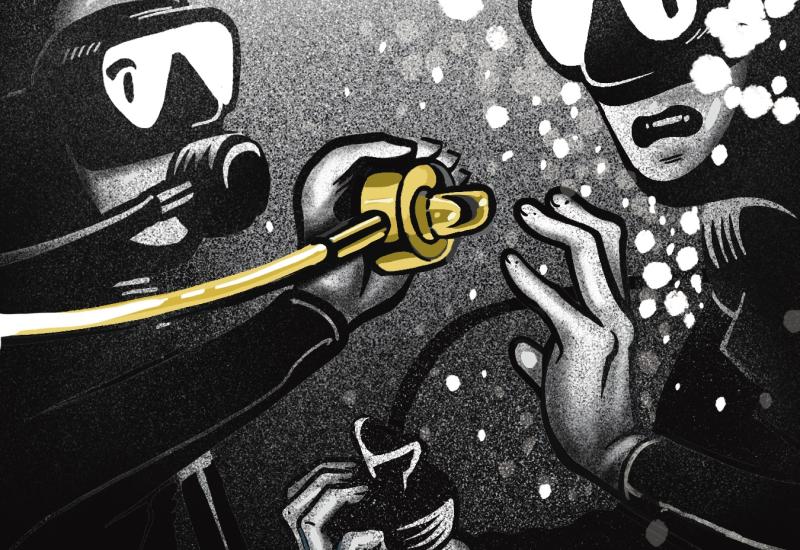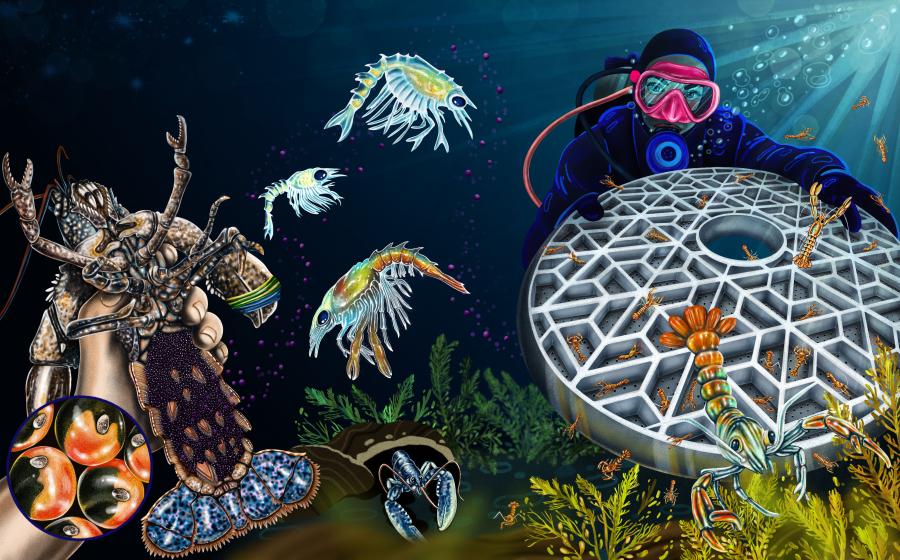Watch Your Back

Carlo GiambarresiLeaving a dive boat unattended results in serious consequences in this accident analysis.
It was the second dive of the day, and Ann felt good. She was diving with three friends and had seen great things. She returned to the mooring they used, but as she ascended, she couldn’t see the boat. She was confused, thinking maybe they had surfaced at the wrong mooring. Yet she was certain this was the right spot.
On the surface, the divers looked in every direction. No boats in sight. They hadn’t surfaced on the wrong mooring. The boat was gone.
The Diver
Ann was 58, with no known health problems. She was an experienced local diver with an advanced open water certification. She exercised occasionally but not regularly, and was somewhat overweight.
The Dive
Ann and her friends often dived together from a private boat. They had several local dive sites they liked to visit, to take photos and just relax underwater.
Each site had a mooring ball permanently attached to an underwater anchor, making it easy for them to run out, tie up and dive. Most of the time they left the boat unattended while making their dives.
Today was no different. They split up into two buddy teams and made their dives, leaving no one on the surface. They completed their first dive and then moved the boat to a new location during the surface interval.
For the second dive, they were underwater for more than an hour, with an average depth of approximately 25 feet of seawater.
The Accident
On the surface after the dive, the divers were confused. They debated whether they had surfaced on the wrong mooring ball, or gotten lost during their dive. The owner of the boat was confident they were at the right spot.
Small waves and a light surface current crossed the location. As each wave passed, they tried to look around for their boat, but it was nowhere in sight. There were no other boats anywhere in the immediate vicinity.
They finally concluded that their boat had gotten loose from the mooring ball and they were on their own. They were going to have to swim to safety. They were several miles from the dock where they kept the boat, but only about 2 miles from shore.
The divers dropped their weights and inflated their buoyancy compensators for the long surface swim. They were tired after spending two hours underwater.
Ann was nervous and worried, and said so to the other divers.
To stay in contact with each other, the foursome decided to float on their backs to swim for the beach instead of swimming face down and using their snorkels. That way they would be able to talk to each other and no one would get lost. It would also make it easier to stay on course.
About two-thirds of the way to shore, Ann’s buddy, Gil, noticed she had grown quiet and was slowing down.
He tried to get her to respond, but she didn’t answer when he called her name. She stopped moving.
He attempted to check for breathing and a pulse, but his own exhaustion made it difficult to be sure. He was cold, and his hands were shriveled from being in the water for so long.
Gil began towing Ann toward shore. As they got closer, they signaled people on land and got help.
Emergency first responders evaluated Ann on the beach, and she was pronounced dead at the scene.
Analysis
While it’s common practice among some boaters to dive or swim away from their boat, it is dangerous to leave a boat unattended.
Making an hourlong dive with no one on the boat is an invitation to trouble. Lines can come loose, vandals can cut lines, and thieves can steal boats left unsupervised.
In this case, the boat was recovered a few miles away. It had come untied from the mooring due to the regular wave action and had drifted with the prevailing current. No foul play was suspected.
Regardless, leaving the boat unattended left four divers stranded with no way back to shore but a long swim. Even if they had surfaced within moments of the boat coming unsecured, it is unlikely they would have been able to swim after the boat and catch it. An average diver in full gear can swim at only approximately 1 knot per hour, and these divers were tired after two dives.
In this case, Ann suffered cardiac arrest and died in the water. Like most people who suffer a heart attack, she had an undiagnosed heart condition. The emotional stress of the situation coupled with the physical work of the swim was too much, and she went into cardiac arrest.
This is a great reminder for all divers, and especially older ones, to make sure you are fit enough for the dive and to consult with your doctor regularly. Divers are taught to move slowly through the water, making their average level of work very low. But in an emergency, you might be required to respond by swimming hard, fast or for long periods. You have to be fit enough to handle emergency situations, not just the easy dives.
The report doesn’t include information about the safety equipment carried by the divers. At a minimum they should have been carrying surface signaling kits with safety sausages to raise their profile above the surface of the water and waves. Heads floating just above the water’s surface are difficult to see under the best of circumstances. A signaling mirror would have made it easier to gain someone’s attention at a distance as well.
For divers who dive from personal boats or from shore, consider a personal signaling device such as an emergency position-indicating radio beacon (EPIRB). Boats have had these for years; they are now being manufactured to be carried by individuals and are made to take along on a dive.
In this case, the decision to swim toward the shore was probably sound. It was only a couple of miles away. Had it not been for the undiagnosed medical condition, they would have been fine. Had they been farther from shore and not in sight of land, or not sure of the direction back to land, they could have stayed floating together and waited for rescue.
That, of course, depends on someone knowing where they were, and missing them when they didn’t return. For that reason, it’s always important to share your plans with someone not along on the trip so they can watch out for you.
Of course, this all could have been prevented if they had brought along someone to watch the boat while they were underwater. A bubble watcher with enough experience to handle the boat on the surface would have prevented all of this.
Lessons for Life
- Have a boat master. This is just as important as a beach master. Have someone on the surface waiting for you who can render aid or call for help if something happens.
- Use proper safety equipment. Especially when you are diving on your own, carry the proper signaling equipment to get the attention of others on a boat or onshore.
- Be healthy. Fitness to dive includes regular exercise to make sure you are healthy enough to respond to emergency situations in the water. Talk to your doctor to confirm your heart is strong enough for the dive, or start an exercise program to make it so.
About Lessons For Life
We're often asked if the Lessons for Life columns are based on real-life events. The answer is yes, they are. The names and locations have been removed or altered to protect identities, but these stories are meant to teach you who to handle a scuba diving emergency by learning from the mistakes other divers have made. Author Eric Douglas takes creative license on occasion for the story, but the events and, often, the communication between divers before the accident are entirely based on incident reports.










